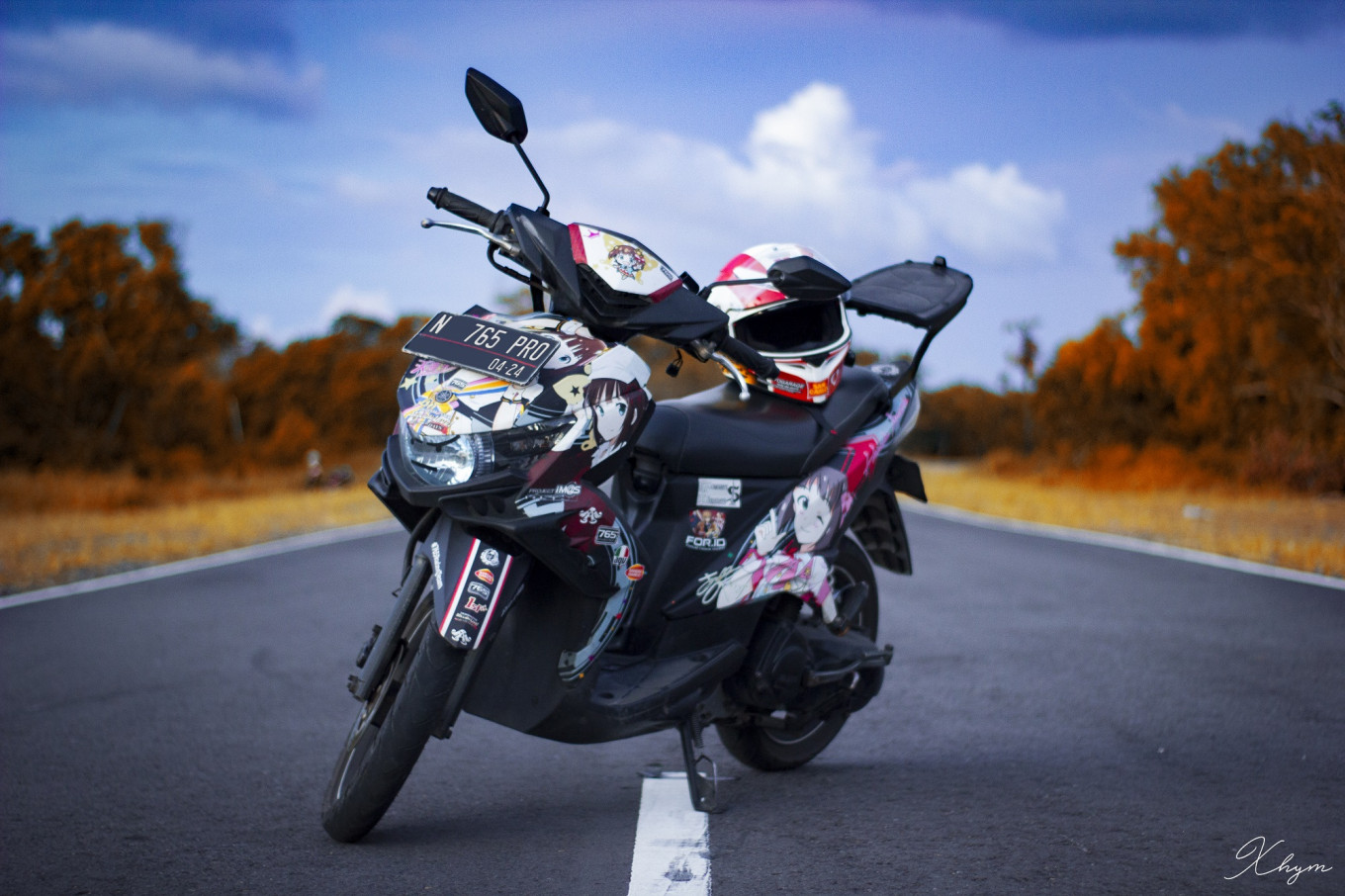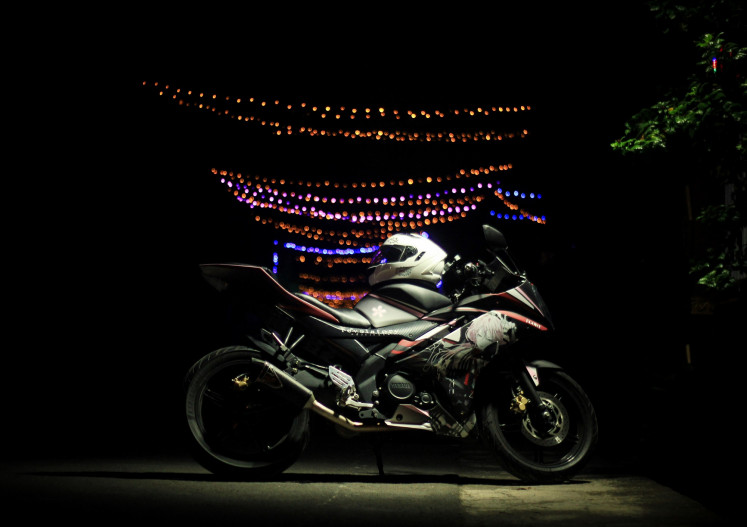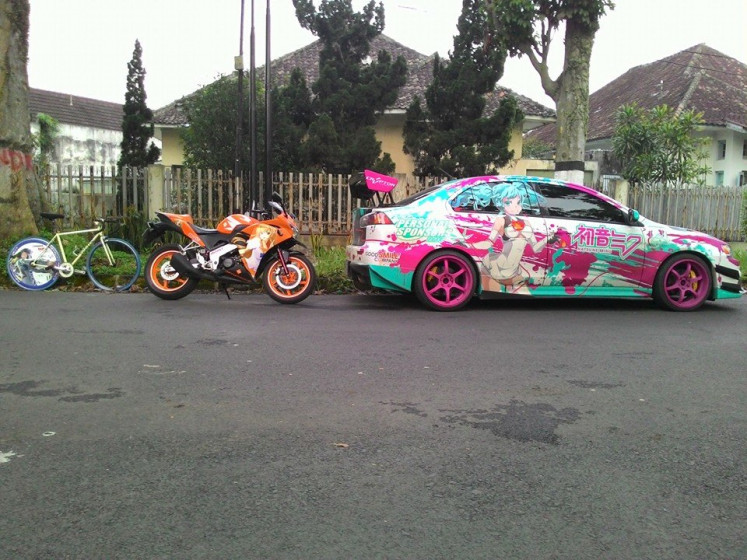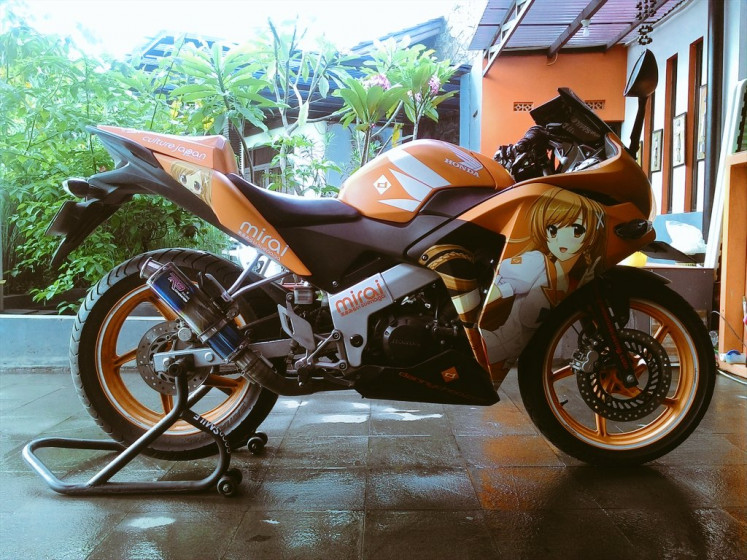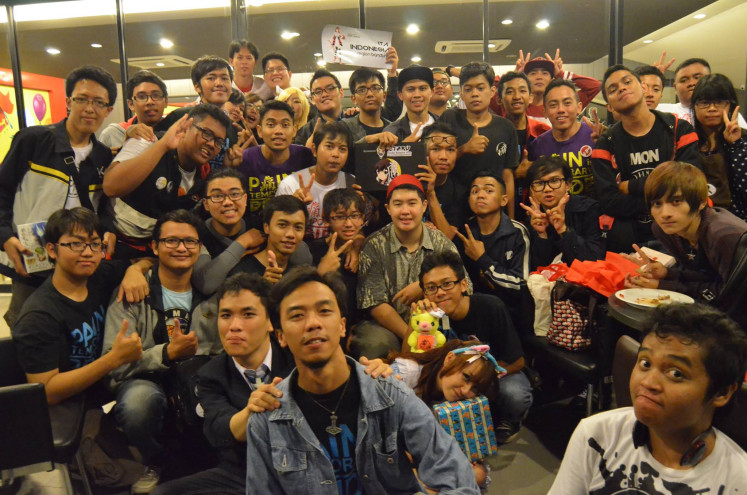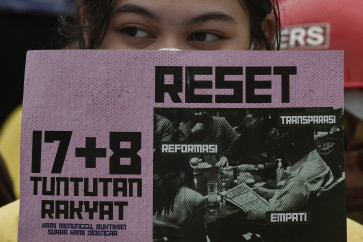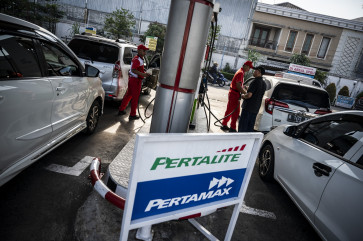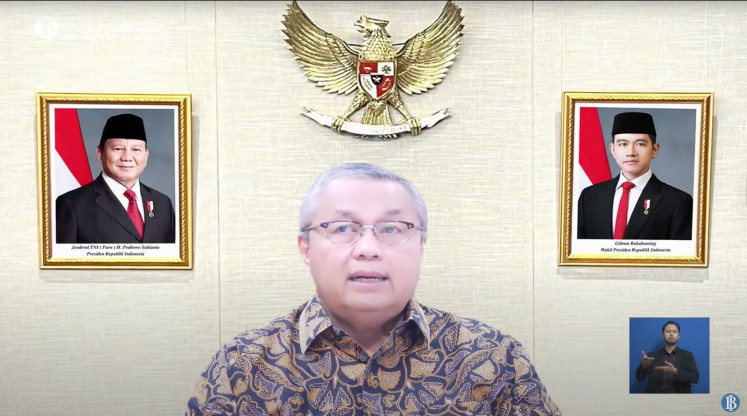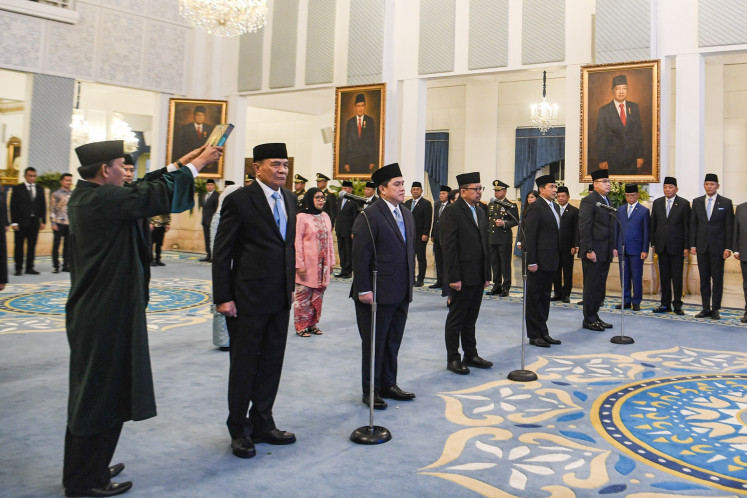Popular Reads
Top Results
Can't find what you're looking for?
View all search resultsPopular Reads
Top Results
Can't find what you're looking for?
View all search resultsLove hurts: Jakarta-based motor club embraces the art of 'itasha'
A local community that focuses on excessively decorating their vehicle with colorful decals is all about satisfying their lust for anime and grabbing people’s attention on the streets.
Change text size
Gift Premium Articles
to Anyone
Y
ou would notice them riding down the streets. Calling themselves the ITA Indonesia Club, this Jakarta-based community pulls no punches when making sure their vehicles stick out on the road, adorning them with what some may see as an overbearing amount of stickers and paint jobs of Japanese anime characters all over.
ITA currently counts over 800 car and motorcycle owners as registered members, from and beyond Jakarta.
The community was formed in 2012 by car enthusiast Michael Sukiman, who had collaborated with a Japanese artist to decorate his own car for a car modification contest that year. At the event, Michael met with similar-minded people, which eventually led to ITA’s forming in December that year. Through a Facebook page he set up, Michael and his new friends grew their community.
ITA takes its name from the Japanese term itasha, which literally translates as “car that hurts”. This refers to people decorating their cars with stickers or paint schemes of fictional characters, especially female ones, from anime, manga or video games.
Guilty as charged: Inori Yuzuriha from the anime 'Guilty Crown' being displayed on ITA member Bram's Honda R15 Credit Bram (JP/Courtesy of Yoel Lucky)The term is the result of combining the Japanese words itai (painful) and sha (vehicle). Itai can be interpreted as “hurt with shame” because of the excessive stickers displayed or “pain on the wallet” due to the high costs involved. The term for decorated motorcycles and bicycles is itansha.
Not a freak
It’s not always easy when the effort to stick out actually does get people to stare, as Yoel Lucky Suryawinata, ITA’s current “person in charge” and a member since 2014, explained.
“Of course, there are positive and negative comments. The general public might think of me, the owner, as an anime freak, and most [would look at me negatively]. But that’s why it is ita — a pain in the wallet because the design fee is not cheap, and [it] even gets negative comments,” Yoel said.
When asked how he responded to the strange looks, he added: “Of course, the way I deal with it is to simply smile at them.”
More riders, more stickers
Yoel explained that the community was made up of people from a variety of backgrounds.
“They are mostly students, but there are also those who are already working but still play an active role in contributing to our community.”
Starting off as a Facebook-based group, the community annually holds an in-person national gathering where they exhibit their vehicles and socialize with each other, mostly in Japanese-style settings such as Japanese cafes and restaurants.
While car decorating is something a lot of people regularly do, according to Yoel, itasha goes beyond a mere hobby into a specific lifestyle that only a few truly grasp.
“What makes it different from other car decoration communities is that our community specifically attaches anime-themed decals and is usually used for everyday vehicles.”
Yoga, who is also a 23-year-old film student from East Java, added that vehicles that could be considered successfully “painful” are “at least 60 or 70 percent covered with decals” that must be “prominently displayed”.
Anime all over
Other than oversized stickers covering the vehicle’s body, there are no rules for choosing which fictional characters to display as long as they are anime or manga-styled.
“Generally, our members display their favorite characters on their vehicles. Some replace [their decals] every three to four months depending on which anime they are currently following and which of its characters they like,” Yoel said.
Though mostly, the characters chosen are moe, a term commonly reserved for youthful and cute female characters. Some are from anime, while others are from mainstream mobile games popular in Japan, such as IdolM@ster or Love Live, and even erotic indie games.
Yoel himself first decorated his Honda CBR 150R in 2012 with Mirai Suenaga, a mascot character created by Japanese pop culture blogger and TV personality Danny Choo.
“At first, I chose Mirai Suenaga because the character’s [color] scheme matches the color of my motorcycle’s registration certificate — orange. Besides that, I also really like the character of Mirai Suenaga because she is beautiful and iconic. I spent around Rp. 1.5 million [US$103.52] back in 2014 to make my Honda CBR 150R itansha.”
Yoel placed the same character onto his other motorbike, a 2018 Honda Beat Street, but with a different design.
“I changed the design to update the decal, and of course, replace the character’s pose and clothes to make it look fresher.”
Mascot on a bike: Japanese Culture mascot Mirai Suenaga decorateds Yoel Lucky's motorbike. (JP/Courtesy of Yoel Lucky)Kris, a 19-year-old member from Semarang, Central Java, has changed his design twice but for another reason.
“At first I chose the UMP45 character from Girls Frontline but then changed to Azur Lane’s Graf Spee in the span of three months because my motorbike is red, while UMP45 is yellow and black. I spent about Rp 300,000 for the first design and Rp 500,000 for the second.”
He considered the fee to be low as it included a commission for the design and sticker printing.
Members can also design the stickers themselves, using the official art of a character and align it to the body of their vehicle on image-editing software, and then send the design to a decal shop to get it done.
Several big cities have specialized workshops, but Kris initially sent his motorbike to a shop specializing in trucks. After all, trucks adorned with stickers or painted sayings, quotes or jokes are a common sight on highways across Java.
The stickers usually get replaced once they fade, which can take two years or more. Yoga, for example, has had the same decals for three years. But mostly, a sticker gets replaced whenever the owners want.
Strangers’ stare
While Yoel found discomfort in people’s, at least early on, Yoga and Kris don’t mind it. Though at first, Yoga’s parents commented that he looked like he was “going to run as a caleg [legislative candidate]”, referring to campaign vans that are thoroughly covered with a candidate’s name and face — a common sight during legislative elections.
Happy together: ITA members, seen here at a gathering pre-pandemic, found a sense of belonging with each other. (JP/Courtesy of Yoel Lucky)But that is not the case for Bram, a 21-year-old university student from East Kalimantan who is studying in Yogyakarta.
He was initially ashamed when he had to ride his Yamaha YZF-R15 to town — decorated on both sides with the image of Inori Yuzuriha, a character from an anime called Guilty Crown.
“I was embarrassed that my motorbike made me look like a weeb,” he said.
Weeb, or wibu in Indonesian, is a derisive term for those obsessed with Japanese culture, negatively to some extent.
He didn’t even tell his parents until after the decals were up but had saved his monthly allowance to spend around Rp 800,000.
“I was afraid that my parents would rip them off, but they responded positively. They said that the design was not bad.”
The negative comments came from another source instead.
“Some of my university mates, with whom I’m not friends anymore, said straight to my face, ‘b***ard weeb’, and laughed at [the decals].”
To this, Bram only said, “Well, if the design of my motorbike hurts and offends them [that is understandable]. That, in fact, is itasha — it is supposed to be painful to look at.”

